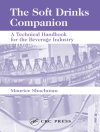This book presents a state-of-the-art report on the treatment of pulp and paper industry effluents using anaerobic technology. It covers a comprehensive range of topics, including the basic reasons for anaerobic treatment, comparison between anaerobic and aerobic treatment, effluent types suitable for anaerobic treatment, design considerations for anaerobic treatment, anaerobic reactor configurations applied for treatment of pulp and paper industry effluents, present status of anaerobic treatment in pulp and paper industry, economic aspects, examples of full scale installations and future trends.
Table of Content
Introduction.- Description of anaerobic digestion process.- Anaerobic versus aerobic treatment.- Effluent characteristics and treatability.- Design considerations for anaerobic treatment.- Anaerobic reactor configurations.- Anaerobic treatment of pulp and paper industry effluents.- Methods for removing sulphur compounds from the effluents.- Measures to render complex wastewaters more amenable to anaerobic treatment.-Example of Full-scale installations.- Economic comparison of anaerobic and aerobic process.- Future trends and perspectives.
About the author
Dr. Pratima Bajpai has a Ph.D from the National Sugar Institute (NSI) Kanpur, India. She is presently a Technical Consultant in Pulp and Paper Industry and has over 30 years of experience in research at National Sugar Institute Kanpur, University of Saskatchewan, University of Western Ontario in Canada and Thapar Center for Industrial Research and Development in India. She has also worked as Visiting Professor at University of Waterloo, Canada and Visiting Scientist at Kyushu University, Fukuoka, Japan.
Dr. Bajpai’s main areas of expertise are industrial biotechnology, pulp and paper and environmental biotechnology. She has contributed immensely to the field of industrial biotechnology and is a recognized expert in the field. Currently she is actively engaged in commercializing biotechnological processes for the pulp and paper industry. Her research accomplishment has resulted in more than 150 publications in the leading international journals and conference proceedings. She has also written several advanced level technical books on environmental and biotechnological aspects of pulp and paper, which have been published by leading publishers such as PIRA International, UK; Springer, Germany; Miller Freeman USA, John Wiley and Elsevier Science. She has also contributed chapters to a number of books and encyclopedia, obtained 11 patents and has written several technical reports. In addition, she has implemented several processes in Indian Paper mills. Dr. Bajpai is also an active member of American Society of Microbiologists and is a reviewer of many international research journals.












